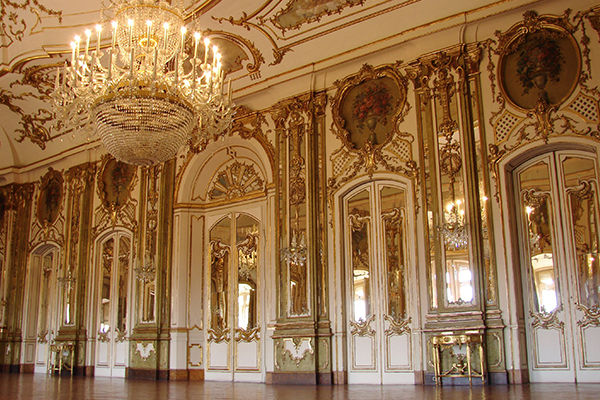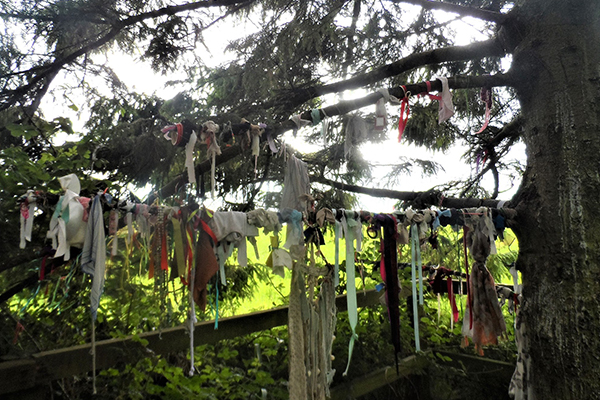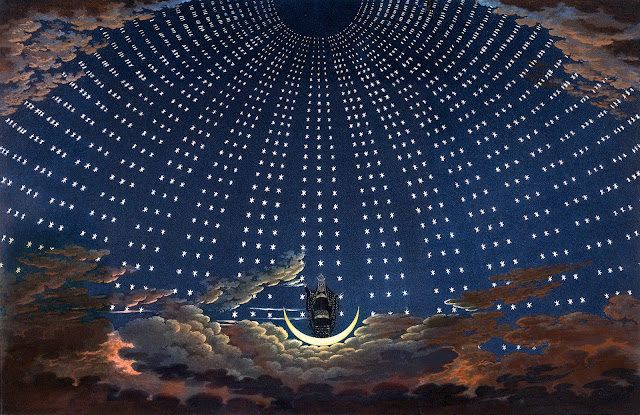I asked JacquieLawson.com if I might use Bev Pask-Hughes’ painting for this blog because of three things: the love of adventure in the woman, the look of hope on the Bear’s face, and the shadows that are gathering around them. They have it all before them, the Heroine’s trials and tests, and Nigredo transformations. At no point are we assured she will win through.
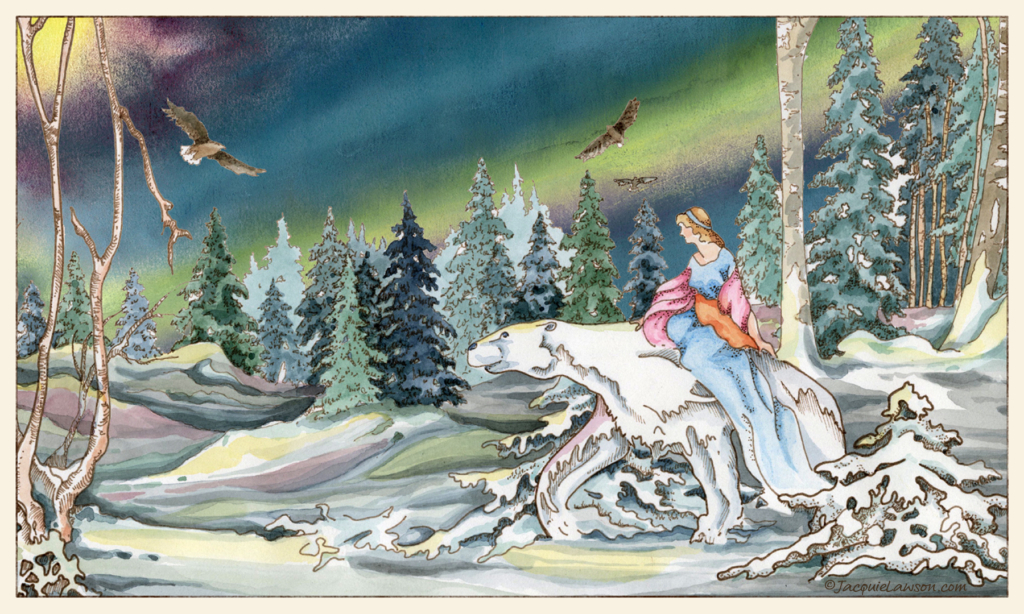
© JacquieLawson.com. Illustration by Bev Pask-Hughes. Image used with permission of jacquielawson.com.
In my mind’s eye I see a Norse skald telling this story in both low and high born places, here the story of a hard working father ((East of the Sun, West of the Moon), there a king (White Bear King Valemon). Regardless of station, these stories’ fathers have three daughters, two of whom are not the Heroine. If you don’t know this story, it might help to read one or both (click on the titles for the links). There are other versions but we are using these two primarily. This story is a variation on the Eros and Psyche (Body and Soul) archetype.
The Golden Wreath and the Bear’s Questions
There are promises and marriages in this tale which begin with the Heroine dreaming of a golden wreath (circle, ring) which she then wants with all her heart. It’s a symbol for wholeness, and one we still use for marriage. Her father is unable to give her what she wants, but the Bear King can. Just to make that point as clear as possible to the listeners, the Bear asks these questions to each of the three sisters: “Have you ever seen so far? Have you ever sat so soft?” The older two say “Yes! On my mother’s lap I sat softer, and in my father’s hall I saw clearer.” He takes them back home. The youngest one, our Heroine, wants something different and her response is “No, I’ve never seen so far or sat so soft.” He says “You’re the right one.”
The sisters stay in the old paradigm where they sit comfortably, not looking far outside the cultural sight lines they have accepted. What is needed is the courage to break the mold, the will to want wholeness at all costs, willing to leave behind everything known up to now. In Ms. Pask-Hughes’ painting we see the Heroine’s joy and wonder at leaving Home, answering the Call of her dream of the Golden Wreath.
Road of Trials Virtues
Perseverance, Loyalty, Courage are Road of Trials Virtues. In White Bear King Valemon the Heroine has a seemingly endless road to travel. Who helps? What gifts are given and used to good purpose? How does this Heroine’s Road of Trials inform us about the qualities, values and energy needed to win through to the Gate Out?
Robert Bly created the Great Mother New Father Conference to foster discussions on myth, modern issues, and promote poetry. For some years now we’ve met at Camp Kieve in Maine, before the summer season of boys’ camps. We sat in a dining hall that had decades of photos of the boys in their cabin groups, boys whose sons’ and grandsons’ were also on the walls.
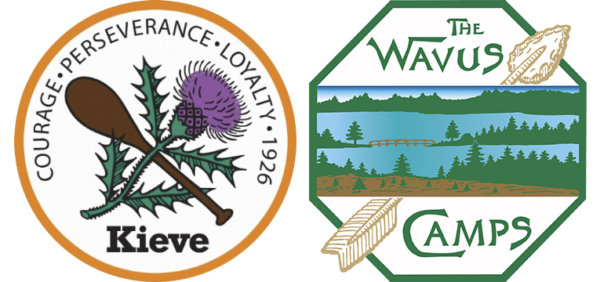
I’ve come to love and respect the camp logo of the thistle, three virtues and a paddle. Traditionally the thistle represents loyalty, courage, and perseverance, also expressed in the three virtues. It’s a symbol of resilience and is a plant that protects itself and all nearby from predators. The paddle is for navigating the water, literally of Lake Damariscotta, and symbolically of one’s life. Once in the boat, in the white water or on the long lake, all you have is your paddle, and your courage and perseverance. Loyalty is what got you in the boat, and keeps you paddling.
White Bear King has the courage to seek the Heroine. Will she have the courage to choose wholeness? He tests the sisters, and perseveres, fighting the King’s armies for each one. He will ask the Heroine for loyalty, as will her father. In this story these virtues, like the ones at Camp Kieve, are masculine ones.
Our Heroine is loyal to her dream’s vision of wholeness (Golden Wreath). She betrays her Loyalty value when she visits Home, and doesn’t listen to both the Bear King and her father’s warning to not be tempted by her mother’s advice. The masculine characters know what’s at risk and what to do. If she will persevere, all will be well.
Instead she listens to her jealous, snoopy mother/sisters and lights the candle to see what it isn’t time to see. Now it appears that all is lost. I think this is the Gate In for both main characters. For the Bear King, the journey is over unless her love can win through; he can do no more, can only Wait. For the Heroine, it is her loyalty to her lover that gives her the courage to persevere, to attempt to find and rescue him before the marriage to the Troll-Queen. The story teaches what it takes to integrate these virtues.
Side note for our feminine/masculine on-going conversation: There is a girls’ camp as well, called Wavus. I asked about their logo and values, and the Director replied: “Kieve and Wavus are brother and sister camps, so we do share the same core value that everyone deserves to be treated with kindness and respect.” Wavus, however, had a long history before the merger with Kieve. The four words that stand on our wall are: Courage, Kindness, Respect, and Responsibility.
“We also have a tradition of the Rays of Wavus-symbols that we cherish and aspire to. At the end of each summer, each camper is awarded one of these rays, and each cabin group is awarded a ray as well to show which value they excelled at that summer. You can read all about the Rays here.”
Courage is shared, but the feminine adds Kindness, Respect and Responsibility instead of the masculine “Perseverance, Loyalty”. Given our current situation of struggling again with the USA’s cultural masculine being loudly expressed as Dominance, I find myself longing for the Dominance valuing men and women to integrate the feminine values WAVUS has chosen.
The Heroine’s Road of Trials
I’ve divided the Heroine’s lengthy Road of Trials into three sections to – two before the Nigredo and one afterwards.
Section One:
- Realization of her betrayal of their love
- Heroine grabs the bear’s fur and hangs on
- Falling off – alone in the northern forest. With nothing, not even a coat.
In our time many of us find ourselves in the wilderness of our modern world, and we feel alone, cold, and defenseless. We might be frightened by the circumstances – another war, shootings, inflation, the top 1% accumulating wealth while many struggle to pay for groceries and transportation. “The world is too much with us…”
What to do? The story tells us: Persevere. Get up (one friend sets five alarms). Get to exercise to elevate pheromones. Take coffee and an hour in the morning on the deck singing, humming, reading an uplifting book or playing poker… whatever it takes, day after day. Persevere. Our ancestors did. This story comes from them, telling us what to do when bogged down: develop a spine and keep it flexible.
Road of Trials Section Two:
- Traveling: struggles across unfamiliar landscapes, searching for the Hero (the Golden Wreath of Wholeness).
- Three times asked “Are you the…”
- Three Yes answers
- Three times told “It’s too late”
- Three times going ahead anyway
- Three times receiving directions
Throughout the story the characters in the Temenos realm know who she is. The one exception is the Troll Queen. When the characters ask she answers “Yes, I am”. Just say Yes. They tell her “It’s too late” but give her directions to the next step of the journey. She goes on anyway. She perseveres.
Nigredo: There is no way out – only through.
The Bear appears to have lost the last chance to break his spell, and now must marry the Troll Queen. Similar to the Beast in Beauty and the Beast, and other Heroes in other tales, he can do nothing but wait and hope. Waiting, trapped, unable to act, is his Nigredo.
Nigredo for the Heroine occurs when she reaches a point where she lies down on the ground, giving in to her exhaustion, seemingly defeated. She has been loyal to the task, courageous in her journey, persevered through many tests and adventures, and is “at wit’s end”, out of possibilities.
In the East of the Sun, West of the Moon version I thought – what? No Nigredo? After reflection, I propose that the journey to the four winds is the Nigredo. She is blown from one to the other, all different but each wind is aware “this is the one that should marry the (Bear King)”. She says “yes” again to the “will you go” questions. Finally she stands up to the very male, gruff North Wind and makes him take her beyond anything known before. I love this idea: instead of a cocoon protecting her transformation she’s “thrown to the winds”. She says Yes to being blown about, becoming stronger and more determined, transforming into a woman of knowledge and fierce action. She becomes the Bear Queen.
Section Three: The Troll Queen’s Castle
Her Heroine’s Road of Trials is not over. Similar to when Psyche falls asleep just before exiting the underworld, Love comes to her. Our Heroine is found by each of her daughters in turn, who take her home to the old women or family that is raising her. The Heroine leaves each house with a magical and practical gift that she will use to break the Troll Queen’s enchantment.
- Old Woman/Child #1 give her: scissors that can make very fine clothes (perception, discernment, having cut away old “skins” one can adorn oneself
- Old Woman/Child #2 give her: a flask that fills with whatever liquid is needed, e.g., The Water of Life
- Old Woman/Child #3 give her: a cloth that conjures up food.
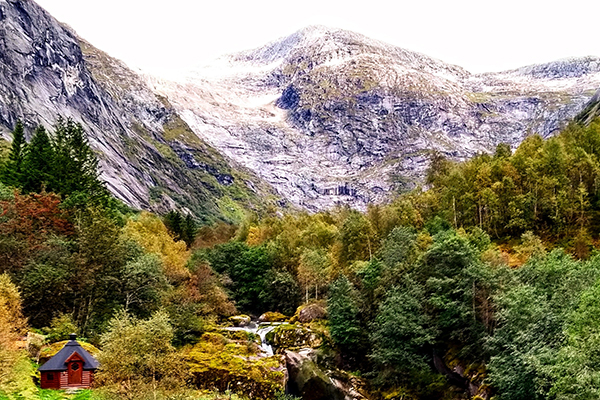
Photo Credit: Pieter Biesemans, Unsplash
Then comes a fourth and final house. Welcomed to their very poor house by the mother and offered stone soup, she spreads the table, pours the drinks, and clothes the children. She doesn’t hesitate. She doesn’t think “What if I use the gifts up?” Having been loved, been offered gifts, she too loves and offers what she has. She embodies Camp Wavus’ virtues of Kindness, Respect and Responsibility. And her generosity is returned by the house’s husband, who of course just happens to be a Smith (transformer) who can make her steel bear claws to climb the ice (or glass) mountain to reach the Bear King. It’s a hard climb, but she courageously perseveres.
Once at the Troll Queen’s she has a plan and puts it in action. She asks three times for a night with the Groom-to-Be, giving up the three gifts. And, again the other world aids her for the carpenters next door hear her cry and tell Valemon “the right one is here for you, weeping at your door.” Freed from the inevitable by her arrival, he can take action.
In one version he announces he will marry only the one who can wash the candle wax stains from his shirt. All the Troll Feminine try but can’t. The Heroine is called in and of course can wash them out. The Trolls explode.
In other versions the Hero and the carpenters build a trap in the bridge the wedding party must cross. The Trolls fall down into the chasm below, perhaps to reconnoiter and find a different Hero to curse.
Three Daughters and Three Gifts
In the first part of the story the Bear-hero needs the Heroine to be patient and accept the situation until the curse is broken. Depending on the variations the Heroine does or doesn’t know about his curse. Accepting the situation includes bearing three children, but nothing in the stories tells us why she allows each child to be taken away by the Bear.
At this point the story’s plot is hard to comprehend in the practical world (“She just accepts that he takes the children? Fairy Tales make no sense!”). Remember the characters are not in the practical world, but on the Road of Trials in the Temenos, the Underworld, the place that leads to transformation. There is no logic there; illogical actions serve as pointers or arrows to important information.
By the Victorian era, in some versions these children don’t exist, have been exorcized from the story and replaced with morally acceptable conventions (the Heroine and the Bear King have not married). But the children are gifts of life the Hero and Heroine have created together, and are their way out of the final trap. The children create the path for the Heroine for the final attempt. What they (masculine and feminine) create together in joy but secrecy (their children) now enables the Heroine (feminine) to locate and rescue the betrayed Hero (masculine). It’s a team effort requiring immense loyalty, courage, and perseverance.
The ancestral lesson: What we create within Love and Grace will carry us through. It must be protected at all costs. We need to put the children back in the story.
Practical World Applications
The Exegetical layer of a story teaches. In this story lessons include to not listen to the vice that causes betrayal (gossip). The image of gossip is from geese… and at first referred to the godparents and family friends who helped to raise the children. As women were eviscerated in European cultures gossip comes to mean whispered secrets and devious intents. In some cultures women were and are banned from gathering together. In this story, had the Heroine not followed the devious intent, a road of ease and joy would have opened for all. It takes her a whole Road of Trials to redeem the destruction she causes.
From the Jungian perspective both the masculine and feminine are within each of us, and the feminine must work hard to find and marry the betrayed masculine. A marriage of the masculine and feminine elements in us guides us to the Golden Wreath – wholeness, and the Self. We have a story where the Heroine’s “masculine” virtues help her, “the feminine”, to win through this Road of Trials. A similar application occurs when an issue is emotional (feminine), and it is reason that informs the solution – research, get some facts, think it through. When the issue is intellectual, of the mind (masculine), we can use emotions to inform – how do I feel, what are my feelings telling me, what do I long for right now. One way to think of it is the need to balance left (masculine) and right (feminine) brain domains.
In our time (maybe all times) I believe the we win through the Road of Trials in the daily actions each of us takes. This is almost a joke, but I find it helpful to think of barometers, with the weather registering up or down. When I learn of families and neighbors, whole communities around the world, caring for each other and the planet the barometer goes up. Profits of weapons and oil industry, learning a wealthy conservative family funds the “climate news” for a major news distributor… barometer down.
I feel in my heart that the prime mover of the universe is Love, and we are culturally outside of that Eden of understanding. But I’m not outside the garden: I can love. And when we love each other we restore that foundational understanding. We travel the wilderness and say “Yes” to those who we meet today. (barometer up)
The skald, the Norse storyteller/bard, told this story to encourage the heart of those on their own endless Road of Trials. Living in the time we do I hope this story brings hope that, no matter what, each of us can courageously persevere, win through at the end and rescue that which we love.
Questions for You
Please scroll down to the comment box at the end of the blog, and engage. Or send an email – I love hearing about your thoughts and reactions. What other questions come up for you?
- When a Road of Trials for you went on and on and on, what did you do to reach the Gate Out?
- When have you been the older sisters, choosing to stay in the old paradigm?
- When did you decide to want wholeness at all costs, willing to leave behind everything known up to now?
- When has a betrayal by you led to a transformation of the situation?
- What gifts have your journeys given you? Have you been generous in sharing them?
- When did you need external “Bear Claws” to climb a mountain?
- When have you practiced and integrated an energy, a skill, that didn’t come naturally but instinctively you knew you must learn and use?
- Do you find in yourself virtues and skills that are naturally yours (born to)?
- Do you cultivate virtues and skills that are not naturally yours but critical to your wholeness?
- When has everyone around you known “you are the one”?
And, finally, a gift in the verses by J.R.R. Tolkein featuring one title of our story.

